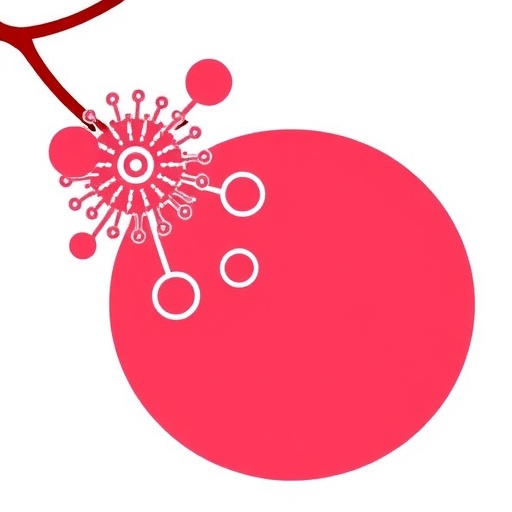In the realm of biomedicine, the exploration of novel therapeutic agents has gained accelerated momentum, particularly in the pursuit of alternatives to conventional pharmaceuticals. In this landscape, chitosan, a biopolymer derived from chitin, has emerged as a compelling candidate for various therapeutic applications. The recent overview by Gonciarz et al. provides a thorough examination of chitosan-based formulations, shedding light on their potential in treating a myriad of health conditions.
Chitosan’s unique properties stem from its biocompatibility and biodegradability. As a natural polymer, it has gained significant attention because of its ability to form hydrogels, which can encapsulate drugs, thereby enabling controlled release. This characteristic is particularly valuable in drug delivery systems, where maintaining precise dosages over time is crucial for maximizing therapeutic outcomes. The versatility of chitosan formulations allows for modifications in the polymer’s molecular weight and degree of deacetylation, leading to tailored applications suited for specific diseases.
The structural characteristics of chitosan—a linear polysaccharide composed of glucosamine and N-acetylglucosamine units—facilitate its interaction with biological systems. Its positive charge allows chitosan to interact with negatively charged cell membranes, enhancing cellular uptake. This quality is particularly advantageous in the realm of gene delivery, where chitosan nanoparticles can be used as carriers for DNA and RNA therapeutics. The authors highlight innovative approaches that exploit chitosan’s inherent properties, enabling more effective delivery and expression of genetic material.
In addition to drug and gene delivery, chitosan’s applications extend into wound healing. The biopolymer promotes cell migration and proliferation, essential processes in tissue repair. Gonciarz et al. underscore the potential of chitosan-based dressings in managing chronic wounds, which frequently present a significant challenge in clinical settings. Chitosan’s antimicrobial properties further enhance its efficacy, providing a dual mechanism of action that addresses infection while supporting healing.
Further expanding on the therapeutic applications, the authors review the implications of chitosan in cancer treatment. By encapsulating chemotherapeutic agents within chitosan nanoparticles, researchers have observed increased drug solubility and stability, which can mitigate side effects while enhancing the delivery of drugs directly to tumor sites. This targeted therapy not only maximizes the therapeutic index but also minimizes systemic toxicity, representing a significant advancement in oncology.
Immunotherapy is another area where chitosan is making waves. Its ability to act as an immunoadjuvant helps to enhance the efficacy of vaccines. When used in formulation with antigens, chitosan can boost immune responses, offering a promising avenue for vaccine development against various infectious diseases and cancers. The findings presented by Gonciarz et al. articulate a critical need for further research in this area, as improved vaccine formulations could lead to better population health outcomes.
The pharmacokinetics of chitosan-based formulations also warrants attention. By modulating absorption, distribution, metabolism, and excretion, researchers have been able to optimize the therapeutic profiles of drugs. The oral bioavailability of drugs can be significantly enhanced through chitosan derivatives, which facilitate transport across intestinal barriers. Understanding these dynamics is vital for developing effective oral therapies, particularly for drugs that traditionally exhibit poor gastrointestinal absorption.
Moreover, the growing body of research surrounding chitosan extends into the realm of chronic diseases, including diabetes and cardiovascular disorders. Chitosan’s cholesterol-lowering effects and its role in glucose regulation have been highlighted as potential therapeutic avenues. By investigating the diverse mechanisms through which chitosan interacts with metabolic pathways, the scientific community may unlock new preventative or curative strategies for managing chronic conditions.
The environmental sustainability of using chitosan cannot be overlooked. As a natural polymer that can be sourced from crustacean shells or fungal materials, it offers a biodegradable alternative to synthetic polymers. This aspect is increasingly important in the face of growing environmental concerns regarding plastic pollution. The sustainable sourcing and processing of chitosan could position it as a key player in developing environmentally friendly biomedical products, aligning scientific innovation with ecological responsibility.
One significant barrier to broader chitosan application lies in its solubility; chitosan is soluble only in acidic conditions. This poses challenges for its use in certain biomedical formulations intended for neutral or alkaline environments, such as in the gastrointestinal tract. Researchers are working diligently to overcome these limitations by developing novel derivatives and composites aimed at enhancing chitosan’s solubility profile, thus broadening its applicability in various therapeutic contexts.
As highlighted in the review, the scalability of chitosan production also poses challenges for its widespread use in clinical settings. Standardization processes must be established to ensure that chitosan formulations maintain consistent quality and efficacy. The advancement of manufacturing techniques, such as green chemistry and microfluidics, can help streamline production and ensure uniformity across batches.
The safety profile of chitosan is another crucial consideration for its clinical applications. While chitosan is generally recognized as safe, understanding the long-term effects of systemic exposure is essential. Gonciarz et al. call for more extensive preclinical and clinical trials to assess the full spectrum of chitosan’s safety and efficacy across diverse populations, thereby paving the way for regulatory approvals and clinical adoption.
Finally, the future of chitosan-based therapeutic applications appears promising. With its multifaceted properties and applications, ongoing research is likely to yield innovative formulations that can address current limitations in healthcare. Collaborative efforts among researchers, clinicians, and industry stakeholders will be paramount in bringing these promising therapies from the lab bench to the bedside. The call to action from Gonciarz et al. is clear: harnessing the power of chitosan holds the potential to transform therapeutic strategies and improve health outcomes for various conditions.
In summary, chitosan presents a versatile platform for developing novel therapeutic agents, and its applications extend from drug delivery to wound healing, cancer therapy, and beyond. The comprehensive overview by Gonciarz and colleagues serves not only as a current snapshot of chitosan research but also as a catalyst for future innovations in biomedical science.
Subject of Research: Chitosan-based formulations for therapeutic applications
Article Title: Chitosan-based formulations for therapeutic applications. A recent overview.
Article References:
Gonciarz, W., Balcerczak, E., Brzeziński, M. et al. Chitosan-based formulations for therapeutic applications. A recent overview. J Biomed Sci 32, 62 (2025). https://doi.org/10.1186/s12929-025-01161-7
Image Credits: AI Generated
DOI: 10.1186/s12929-025-01161-7
Keywords: Chitosan, drug delivery, wound healing, nanomedicine, immunotherapy, environmental sustainability, chronic diseases.
Tags: biocompatible polymers in medicinebiodegradable polymers in biomedicinechitosan biopolymer therapeutic applicationschitosan drug delivery systemschitosan formulations in health treatmentschitosan hydrogels for controlled releasechitosan interactions with cell membraneschitosan nanoparticles for gene deliveryinnovations in chitosan formulationsnatural polymers in pharmaceuticalsstructural characteristics of chitosantailored chitosan applications for diseases





